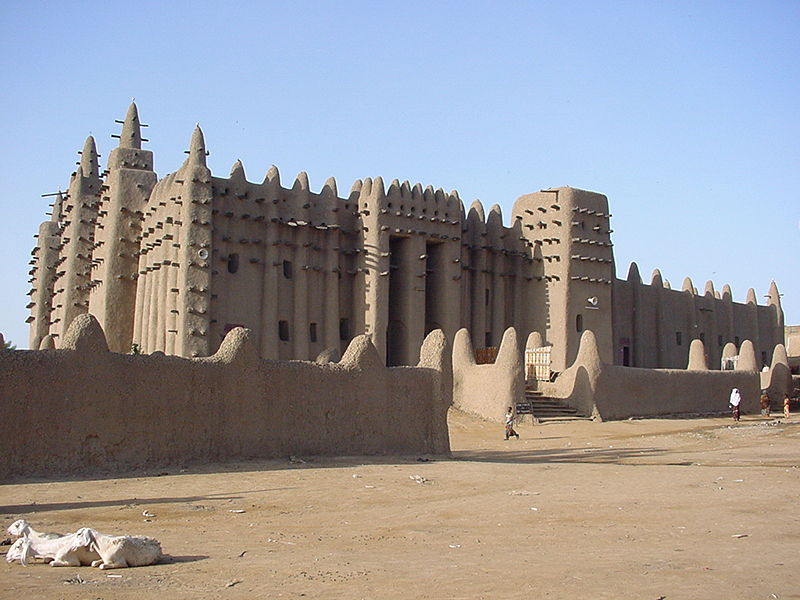

The popular statement, " From here to Timbuktu." conjures up images of remote, isolated and distant parts of this earth. Very few people are aware of this ancient city's location, and fewer still ascribe any kind of civilization to this historic area. Timbuktu is located in the western African nation of Mali at the edge of the sahara.
Timbuktu was founded by the Tuareg Imashagan in the 11th century. During the rainy season, the Tuaregs roam the desert up to Arawan in search of grazing lands for their animals. During the dry season, however, they returned to the Niger river where the animals grazed on a grass called "burgu." Whenever they camped by river they got sick from mosquitoes and stagnant water. Because of these unfavorable conditions, they decided to settle few miles away from the river where they dug a well. Whenever it started raining in the desert, the Turareg will leave their heavy goods with an old Tuareg women called Tin Abutut who stayed at the well. In the Tuareg language, Tin Abutut means "the lady with the big naval". With the passage time, the name Tin Abutut became Timbuktu.

The historic town of Timbuktu is located at the precise point where the Niger flows northward into the southern edge of the desert. As a result of its unique geographical position, Timbuktu has been a natural meeting point of Songhai, Wangara,Fulani, Tuareg and Arabs. According to the inhabitants of Timbuku, gold came from the south, the salt from the north and the Divine knowledge, from Timbuktu. Timbuktu is also the cross-road where "the camel met the canoe." It is to this privilege position that the city owes much of its historical dynamism. From the 11th century and onward, Timbuktu became an important port where goods from West Africa and North Africa were traded.
Goods coming the Mediterranean shores and salt were traded in Timbuktu for gold. The prosperity of the city attracted both black scholars, blacks merchants and Arabs traders from North Africa. Salt, books and gold were very much in demand at that time. Salt was came from Tegaza in the north, gold, from the immense gold mines of the Boure and Banbuk and books, were the refined work of the black scholars and scholars of the Sanhaja descent.
The Tuareg Messufa captured the salt mine of Tegaza and thus took control of the salt trade. The Messufa exported the salt to Timbuktu via camel caravans. This second factor that helps us better explain how the so-called manuscripts of Timbuktu evolved, developed and expanded throughout the whole empire. Thus, the intellectual importance of Timbuktu and the reasons it flourished are not exclusively based upon “strategic position.” It is important to convey that someone in a position of power was responsible for encouraging the attitude toward learning that prevailed in Timbuktu.As Dr. Molefi Asante has put it so conclusively in his book entitled, Classical Africa.

“The African love for knowledge, literature and learning although now filtered through the religion of Islam, never died. As it has been in the days of the early Egyptian Kingdom, so it was in the days of Askia Mohammed. In fact, Leo Africanus, a historian of the XVIth century wrote about Timbuktu:
There are many judges, doctors and clerics here, all receiving good salaries from King Askia Mohammed of the State of Songhay. He pays great respect to men of learning. There is a great demand for books, and more profit is made from the trade in books than from any other line of business.”
No hay comentarios:
Publicar un comentario